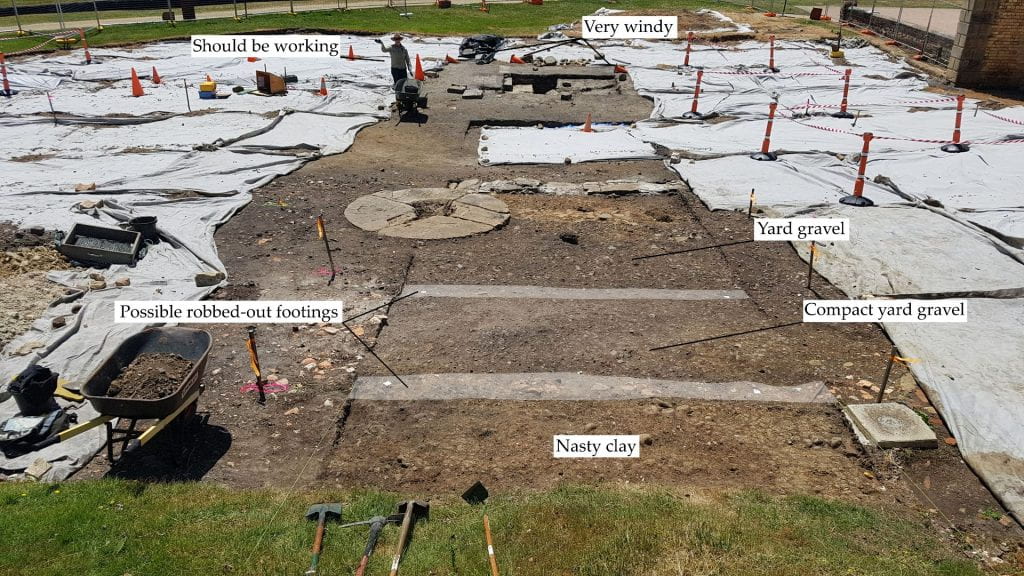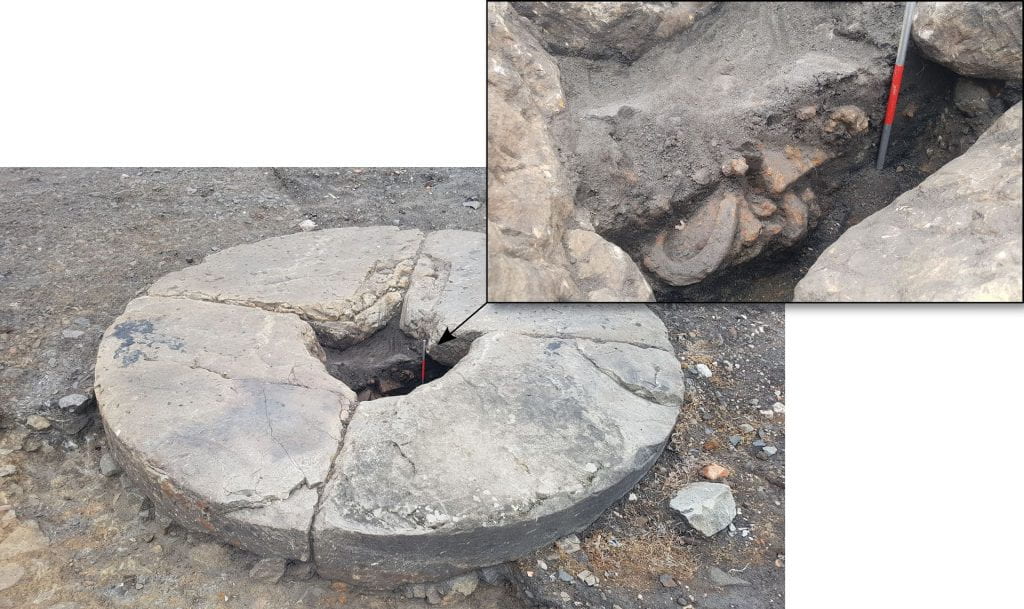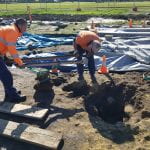After a couple of interrupted weeks, we’ve had our heads back in the holes for three days this week. The last day was just horrible. Windy and horrible. But, being the heroes we are, we carried on uncomplainingly. As is the way with archaeological process, it has been a mixed bag of slow going and rapid progress. Sylvana has spent most of the week puzzling out the stratigraphic relationships in the waterfront area. This has involved determining what deposits may have related to original waterfront infrastructure and filling, what were later reclamation activity and what was completely FUBAR’d by the 20th century service trench. A lot of head-scratching and sighing has taken place, but we’re getting there. A more interesting update when we have it all puzzled out.
In the southern extent of the site, I have been busily scratching off the messed-up gravel layer from the ‘Mechanics’ Yard’, as well as some brick rubble deposits where a former row of offices/workshops had been situated. This has exposed yet more dolerite yard gravel (of course), as well as a couple of suspicious lines of silt and rubble. These may well represent two footings that were robbed out during the post-1877 salvage phase. These are associated with a distinct, compact layer of redeposited orange clay. This is in the area where the offices were situated and may potentially relate to a subsurface area below the office’s flooring. If so, it is very high in the stratigraphy and has been exposed for quite some time – resulting in the loss of any related deposits and artefacts. Patches of charcoal lie across the clay, which likely dates from the 1897 bushfires. This places the clay in or very near the convict period.
Work has also taken place on everybody’s favourite feature, the ‘big round thing’. The deposit in the centre has been taken out. This found a layer of brick and sandstone rubble capping a very rich, loamy deposit containing a large amount of iron artefacts. These look to have been all scrap iron (including a bent door hinge) that was collected from the site and dumped in the hole, likely at the time of the site’s salvage. Below this deposit was a thick layer of charcoal and iron waste, potentially from the 1897 bushfire. The hole had been cut into the underlying gravel and clay deposits before the round thing had been placed, as the hole in the round thing and the hole below were different sizes. Made of four pieces, the round thing’s hole had been cut whilst each of the four blocks were separate (the hole did not quite align). Once in place on the ground, a plate had been recessed and bolted over the hole. At the moment, there’s no evidence to say it’s not a crane base.




